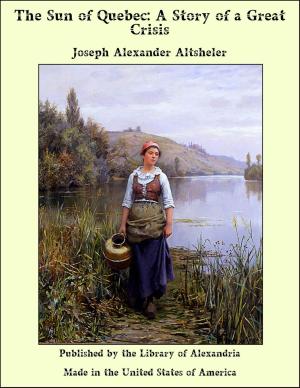The Islets of the Channel
Nonfiction, Religion & Spirituality, New Age, History, Fiction & Literature| Author: | Walter Cooper Dendy | ISBN: | 9781465601704 |
| Publisher: | Library of Alexandria | Publication: | March 8, 2015 |
| Imprint: | Language: | English |
| Author: | Walter Cooper Dendy |
| ISBN: | 9781465601704 |
| Publisher: | Library of Alexandria |
| Publication: | March 8, 2015 |
| Imprint: | |
| Language: | English |
It was in the tenth century that the French King, Charles IV., granted to Rollo the Pirate, who had married his daughter, the Dukedom of Normandy, together with the islets of “the wide bay of St. Michael’s;” a guerdon for his conversion to Christianity. When William, the descendant of Rollo, won the field of Hastings, the islets became an appanage of Britain, by the right of being conquered, and so they remain to this day politically subject to Britain, although geographically a parcel of France. The discovery of Roman, Celtic, Runic, and Gallic relics and coins, and the ruins of temple and fortress throughout the islets, reflect their history on the olden time. Jersey, it seems, was the isolated retreat of Ambiorix, a rebel to Julius Cæsar, if we rightly interpret the sixth book of the “Commentaries.” These Norman rocks, however, have not been held unchallenged. The French descents date from Henry I., through the reigns of John—who established the “Royal Courts,” on a visit to the isles—of Edward I., Edward III., Henry VII., Edward VI., George II., and George III., but they were all failures, although Du Guesclin, who was commissioned by Charles the Wise, seized and held Mount Orgueil Castle. In the dilemma of “the Roses,” the Norman Pierre de Breze assumed the title of “Lord of the Isles” until the blending of these royal emblems. The last attempt was on Jersey, in 1779-80, by the Duke of Nassau, when Pierson fell in its successful defence. During the joyous months of summer and autumn, this fair group of islets will become more and more attractive as the facility of communication increases, especially as they possess the elements both of the salubrious and the beautiful in a very high degree. Soft and health-breathing gales are wafted along their very lovely and bloom-spangled valleys; they are belted by magnificent cliffs, indented by sheltered coves and deep and darksome caverns, and by outlying rocks of the most fantastic forms, and they are enriched, moreover, by quaint and antique structures, emblazoned in remote history and romantic legend.
It was in the tenth century that the French King, Charles IV., granted to Rollo the Pirate, who had married his daughter, the Dukedom of Normandy, together with the islets of “the wide bay of St. Michael’s;” a guerdon for his conversion to Christianity. When William, the descendant of Rollo, won the field of Hastings, the islets became an appanage of Britain, by the right of being conquered, and so they remain to this day politically subject to Britain, although geographically a parcel of France. The discovery of Roman, Celtic, Runic, and Gallic relics and coins, and the ruins of temple and fortress throughout the islets, reflect their history on the olden time. Jersey, it seems, was the isolated retreat of Ambiorix, a rebel to Julius Cæsar, if we rightly interpret the sixth book of the “Commentaries.” These Norman rocks, however, have not been held unchallenged. The French descents date from Henry I., through the reigns of John—who established the “Royal Courts,” on a visit to the isles—of Edward I., Edward III., Henry VII., Edward VI., George II., and George III., but they were all failures, although Du Guesclin, who was commissioned by Charles the Wise, seized and held Mount Orgueil Castle. In the dilemma of “the Roses,” the Norman Pierre de Breze assumed the title of “Lord of the Isles” until the blending of these royal emblems. The last attempt was on Jersey, in 1779-80, by the Duke of Nassau, when Pierson fell in its successful defence. During the joyous months of summer and autumn, this fair group of islets will become more and more attractive as the facility of communication increases, especially as they possess the elements both of the salubrious and the beautiful in a very high degree. Soft and health-breathing gales are wafted along their very lovely and bloom-spangled valleys; they are belted by magnificent cliffs, indented by sheltered coves and deep and darksome caverns, and by outlying rocks of the most fantastic forms, and they are enriched, moreover, by quaint and antique structures, emblazoned in remote history and romantic legend.















